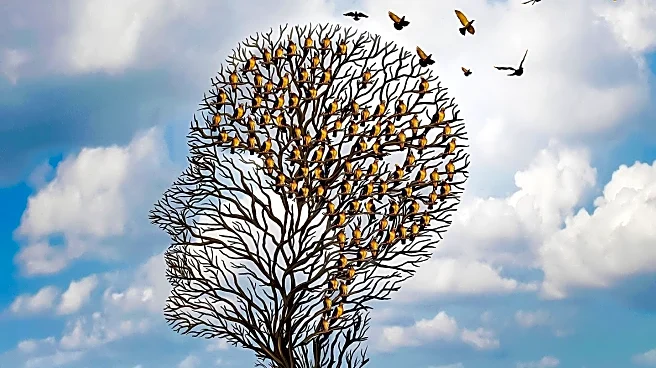What's Happening?
Neuroscientists emphasize the importance of engaging in activities that challenge the brain to promote neurogenesis, the formation of new neurons. Activities such as learning a new language, solving puzzles, or taking up new hobbies can stimulate the brain and potentially reduce the risk of dementia. The concept of neuroplasticity, which refers to the brain's ability to adapt and reorganize itself, is central to this process. Engaging in tasks that induce a state of flow, where individuals are deeply immersed and focused, can enhance neuroplasticity and overall well-being. Additionally, modern treatments like Transcranial Magnetic Stimulation (TMS) are being explored to further stimulate brain plasticity.
Why It's Important?
The findings underscore the significance of cognitive stimulation in maintaining brain health and preventing age-related decline. As the U.S. population ages, strategies to combat dementia and cognitive deterioration become increasingly vital. Encouraging activities that challenge the brain can lead to healthier aging and reduce healthcare costs associated with neurodegenerative diseases. Individuals who engage in lifelong learning and novel experiences may enjoy improved mental health and quality of life, highlighting the societal benefits of promoting brain-challenging activities.
What's Next?
As awareness of the benefits of cognitive stimulation grows, educational institutions, healthcare providers, and community organizations may increase offerings of programs and activities designed to challenge the brain. Research into treatments like TMS may expand, potentially leading to broader adoption in clinical settings. Public health campaigns could focus on encouraging diverse and accessible brain-challenging activities to reach a wider audience, including older adults and those at risk of cognitive decline.
Beyond the Headlines
The emphasis on brain-challenging activities raises ethical considerations regarding access and equity. Ensuring that all individuals, regardless of socioeconomic status, have opportunities to engage in such activities is crucial. Additionally, the cultural dimensions of learning and cognitive stimulation may influence the types of activities that are most effective or appealing to different groups, necessitating culturally sensitive approaches.











